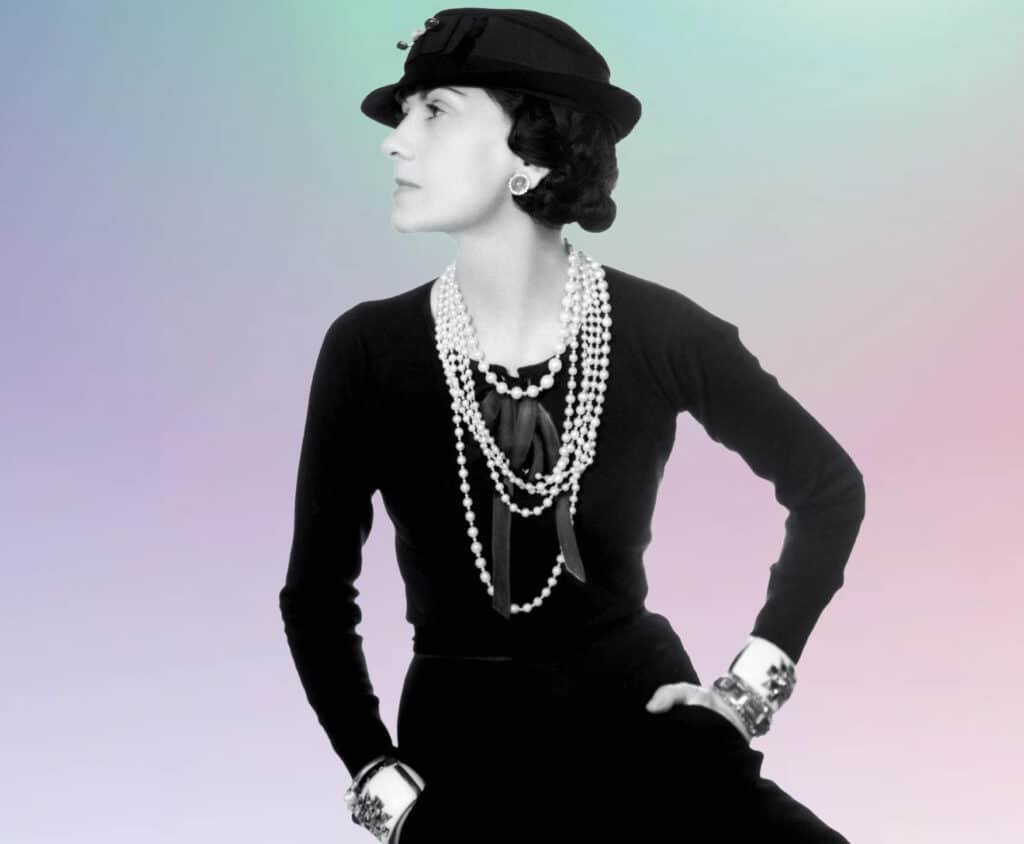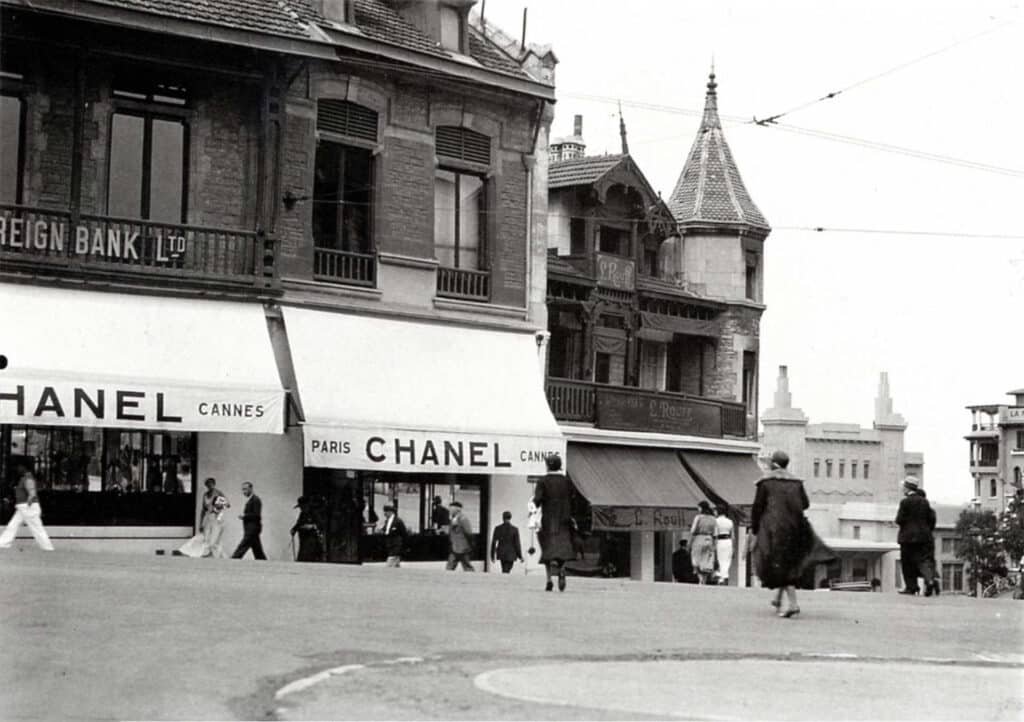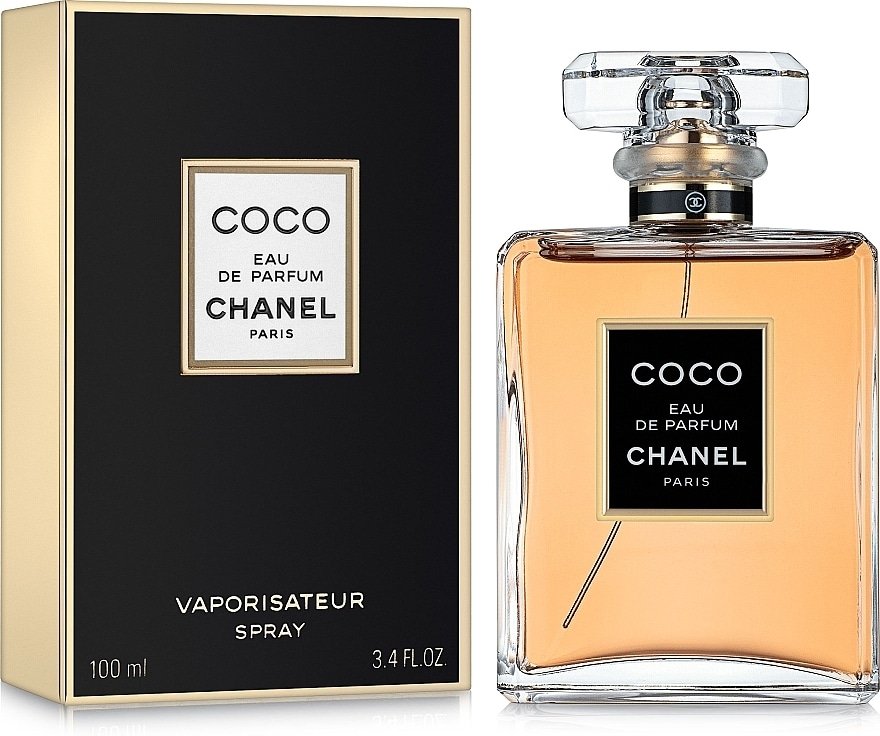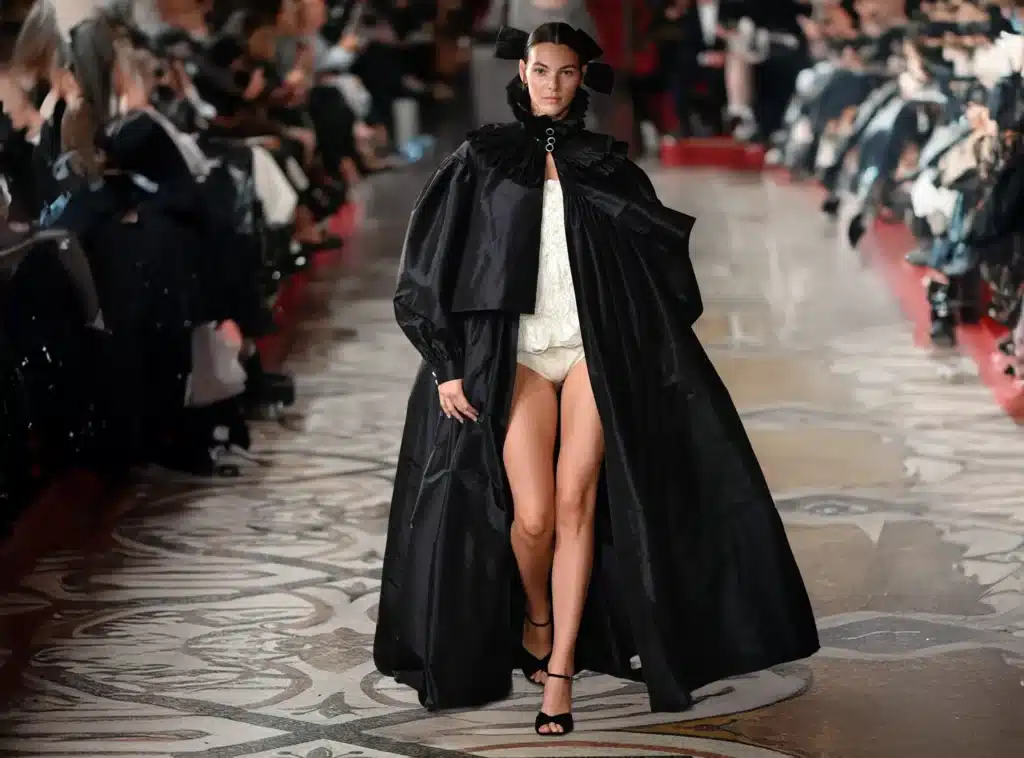More than a name, Chanel is a language of elegance, a symbol of rebellion, and a testament to the enduring power of a singular vision. For over a century, the interlocking Cs have represented the pinnacle of luxury, yet the story behind the brand is often told in fragmented pieces—a timeline here, a biography there. Many histories capture the facts but miss the soul of the revolution. This is not just another timeline; it is the definitive story of how one woman’s rebellious spirit ignited a fashion revolution, how a sleeping giant was masterfully reinvented, and how the House of Chanel became an eternal global icon. From a humble orphanage to the grand runways of Paris and the dazzling boutiques of Dubai, this is the complete history of Chanel.
The Rebel Founder: The Coco Chanel Story (1883 – 1910)
The legend of Chanel begins not in a glamorous Parisian atelier, but in the stark reality of 19th-century rural France. The woman who would start the Chanel brand was born Gabrielle Bonheur Chanel on August 19, 1883[1]. Her early life was marked by poverty and loss. After her mother’s death, her father sent her and her sisters to an orphanage at the convent of Aubazine, a place of austere discipline that would paradoxically shape her aesthetic vision. It was here, under the tutelage of nuns, that she learned to sew—a skill that would become her instrument of liberation[2].
This upbringing forged a fiercely independent and determined character. After leaving the orphanage, Gabrielle tried her hand at a brief career as a café singer, where she performed a song about a lost dog named “Coco.” The nickname stuck, becoming the moniker for the woman who would soon rewrite the rules of fashion. Her time as a performer and a courtesan introduced her to a world of wealth and high society, but she was never content to be merely an ornament. She observed the restrictive, uncomfortable clothing of the Belle Époque and saw an opportunity not just for design, but for revolution. For a deeper dive into her formative years, Coco Chanel’s Biography from the National Women’s History Museum provides excellent detail.

The Birth of an Empire: Chanel Brand Origin (1910 – 1939)
The Chanel brand origin story is one of shrewd ambition fueled by strategic patronage. In 1910, with the financial backing of her lover, the wealthy British polo player Arthur “Boy” Capel, Coco Chanel opened her first shop at 21 rue Cambon in Paris[3]. It was a millinery boutique named “Chanel Modes.” Her hats were a stark departure from the fussy, feather-laden creations of the time—they were simple, elegant, and chic.
Her success was swift. She soon expanded, opening boutiques in the fashionable resort towns of Deauville and Biarritz, catering to a new class of wealthy women who embraced a more active, leisurely lifestyle. It was here that she began selling clothing, famously using jersey—a fabric then reserved for men’s underwear—to create comfortable and practical sportswear. This radical choice was the first shot fired in her fashion revolution[4]. The brand was born from a desire to free women from the physical constraints of their clothing, a philosophy that remains at its core today. The Met’s History of Chanel offers an authoritative look at how her early boutiques catered to this emerging modern woman.

How Coco Chanel Revolutionized Fashion
To understand Chanel’s influence is to understand that she did not merely design clothes; she designed a new way of life for the modern woman. Her work was a direct rebellion against the corseted, immobile silhouette that had dominated for centuries. As she famously declared:
Luxury must be comfortable, otherwise it is not luxury.
This philosophy was the guiding principle behind every one of her groundbreaking innovations. Her revolution was so profound that its impact is still felt in every woman’s wardrobe today. She championed simplicity, function, and a sense of ease that was previously unheard of in haute couture. By borrowing from menswear and sportswear, she gave women the physical freedom to participate more fully in a rapidly changing world. For a curatorial analysis of her groundbreaking work, the V&A’s ‘Fashion Manifesto’ Exhibition is an unparalleled resource.
The Little Black Dress: Democratizing Elegance
Before Chanel, black was a color reserved for mourning or service. In 1926, American Vogue published a drawing of a simple, calf-length black Chanel dress and declared it “the frock that all the world will wear.” They dubbed it “Chanel’s Ford,” a nod to its accessibility and modern appeal[5]. The Little Black Dress (LBD) was born.
Chanel transformed black into a symbol of chic, versatile, and timeless elegance. It was a uniform for women of all classes, a blank canvas that could be dressed up or down, democratizing style in a way that had never been done before.
The Chanel Suit: A New Uniform for Women
Perhaps no single garment better represents the legacy of the Chanel fashion house than the tweed suit. Inspired by the sportswear she borrowed from her aristocratic lovers, Chanel adapted tweed to create a uniform for the modern woman that was both elegant and liberating.
The suit’s design was a marvel of functionalism: a collarless, braid-trimmed cardigan jacket paired with a graceful, slim skirt. The jacket’s silk lining made it supple, while a delicate chain sewn into the hem ensured it hung perfectly. It offered women an unprecedented freedom of movement, becoming a symbol of post-war female empowerment and a staple in the wardrobes of powerful women, famously worn by figures like Jacqueline Kennedy.
Chanel No. 5: The Scent of a Woman
In 1921, Chanel forever changed the world of fragrance with the launch of Chanel No. 5. At the time, respectable women wore perfumes that smelled of a single flower, while more risqué scents were heavy with musk or jasmine. Chanel wanted a scent that was complex and artificial, “a woman’s perfume with the scent of a woman.”
She collaborated with perfumer Ernest Beaux, who presented her with several samples. She chose the fifth vial, and a legend was born. Its revolutionary use of aldehydes gave it a clean, sparkling quality unlike anything else. Housed in a minimalist, laboratory-like bottle, Chanel No.5 was the first perfume to bear a designer’s name, establishing a business model that luxury brands still follow today. Its status was cemented in history when Marilyn Monroe famously revealed she wore “just a few drops of Chanel No. 5” to bed.

War, Closure, and The Comeback (1939 – 1971)
The outbreak of World War II in 1939 forced Chanel to close her fashion house, stating it was “not a time for fashion.” Her activities during the war remain a controversial and complex part of her story, with historical records detailing her relationship with a German officer[6].
After the war, the fashion landscape had changed dramatically. Christian Dior’s opulent, hyper-feminine “New Look” of 1947, with its wasp waists and voluminous skirts, was a direct contradiction to everything Chanel stood for. In 1954, at the age of 70, Chanel staged a triumphant comeback.
The French press was initially hostile, but American buyers embraced her return to comfortable, functional elegance. The Chanel suit became more popular than ever, a chic and modern alternative to the restrictive styles of the day. She had once again proven that her vision of fashion was not a fleeting trend, but a timeless philosophy. Gabrielle “Coco” Chanel continued to work until her final days, passing away in her suite at the Hôtel Ritz in Paris on January 10, 1971.
The Lagerfeld Reinvention: The Making of a Modern Icon (1983 – 2019)
After Coco’s death, the brand drifted, becoming known more for its fragrances than its fashion. In 1983, the house made a decision that would define its modern history: they appointed Karl Lagerfeld as artistic director[7]. Many believed the brand was “unrevivable,” but Lagerfeld proved them wrong with his unparalleled genius.
Lagerfeld’s approach was one of masterful reinvention. He understood that to keep Chanel relevant, he couldn’t just preserve it in amber; he had to deconstruct and reinterpret its core codes for a new generation. He took the classic tweed, pearls, chains, and the iconic CC logo and played with them, infusing them with the energy of streetwear and pop culture. He shortened skirts, exaggerated proportions, and stamped the double-C logo on everything from surfboards to handbags. His legendary runway shows—staged in elaborate sets resembling supermarkets, airports, and even a rocket launchpad—were the most anticipated events of fashion week. Lagerfeld did not just revive Chanel; he transformed it into the global luxury super-brand we know today, perfectly blending its rich heritage with an irreverent modernity.

The Modern Era: Chanel in the 21st Century and the UAE
Following Karl Lagerfeld’s passing in 2019, his longtime right-hand and director of the fashion creation studio, Virginie Viard, was named his successor. Viard’s vision for Chanel is a softer, more wearable interpretation of the house codes, focusing on a subtle and feminine elegance that continues the legacy while forging its own path. The brand remains a dominant force in the 21st century, its relevance maintained through a blend of timeless design, spectacular fashion shows, and powerful celebrity ambassadors who introduce the brand to new generations.
Chanel’s Enduring Presence in the UAE
In the United Arab Emirates, Chanel is not just a brand; it is the ultimate symbol of sophistication and luxury. The Chanel brand UAE presence is powerfully felt through its magnificent flagship boutiques in premier locations like The Dubai Mall and Mall of the Emirates in Dubai, and The Galleria Al Maryah Island in Abu Dhabi.
For the fashion-conscious clientele of the region, Chanel represents an investment in timeless style and impeccable craftsmanship. The brand’s popularity is a testament to its universal language of elegance, resonating deeply within a culture that has a rich appreciation for heritage, quality, and luxury.
Chanel History Timeline: Key Moments at a Glance
For a quick overview, here are the most pivotal moments in the complete history of the Chanel brand:
- 1883: Birth of Gabrielle “Coco” Chanel.
- 1910: Coco Chanel opens her first hat shop, “Chanel Modes,” in Paris.
- 1921: Launch of the revolutionary fragrance, Chanel No. 5.
- 1926: Vogue features the “Little Black Dress,” cementing its iconic status.
- 1954: Chanel makes her historic comeback, challenging the “New Look.”
- 1971: Death of Gabrielle “Coco” Chanel in Paris.
- 1983: Karl Lagerfeld is appointed as artistic director, beginning an era of reinvention.
- 2019: Virginie Viard succeeds Karl Lagerfeld as Creative Director.
From an orphan learning to sew to a designer who liberated women, the journey of Chanel is a story of rebellion, relentless innovation, and masterful reinvention. Coco Chanel didn’t just create clothes; she crafted a philosophy of elegance that has been lovingly preserved and brilliantly reinterpreted for more than a century. Her legacy is not just in the tweed jackets or quilted bags we see today, but in the freedom and confidence that her vision gave to women around the world. It is this powerful story that ensures Chanel will forever remain the ultimate symbol of timeless style.
Discover the latest from the iconic house by visiting a Chanel boutique in the UAE, or share your favorite Chanel moment in the comments below.
References
- Biography.com Editors. (2021, May 11). Coco Chanel Biography. A&E Television Networks.
- National Women’s History Museum. (n.d.). Coco Chanel.
- Krick, J. (2004, October). Gabrielle “Coco” Chanel (1883–1971) and the House of Chanel. In Heilbrunn Timeline of Art History. The Metropolitan Museum of Art.
- The Editors of Encyclopaedia Britannica. (2024, August 15). Coco Chanel. Encyclopædia Britannica.
- Confinity. (n.d.). Coco Chanel.
- Vaughan, H. (2011). Sleeping with the Enemy: Coco Chanel’s Secret War. Knopf.
- Forbes. (2019, February 19). A Brief History Of The House Of Chanel: From Coco Chanel To Karl Lagerfeld To Virginie Viard. Forbes.



